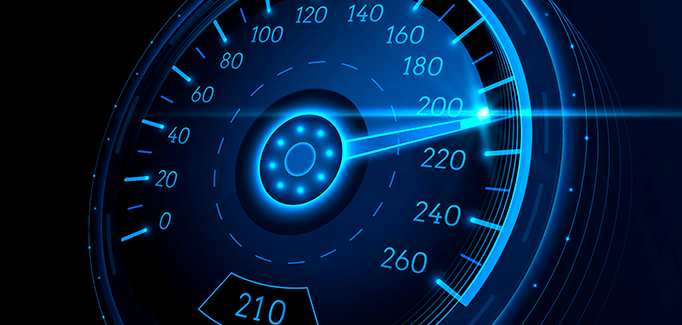In Saint-Cloud, France, underneath a 450-year-old building in an environmentally-controlled vault that requires three keys to open, sits a cylinder known as the international prototype kilogram, or IPK. The IPK is the official weight of a kilogram. Everything – your bathroom scale, your packaged food and the weights in your gym – is calibrated against it.
Calibration is the act of precise measuring and adjusting to fit a standard. In some ways, calibration of quality in the call center is very similar to the calibration of home scales. Calls are like a person’s bodyweight, quality evaluations are like scales, and the official quality standard is like the IPK. The goal of the calibration process for weights is to ensure that the scales around the world are all meeting the IPK standard; the goal of the calibration process in the contact center is to ensure that evaluators’ measurements of quality are all meeting that official quality standard.
Calibration in the contact center is also more complex than weighing pounds and kilograms. While some metrics like call length are exact, others, like friendliness and professionalism, are more subjective. The calibration of quality management processes is the best way to ensure that all those measurements of quality are fair, accurate and productive, but running an ongoing program can be challenging.
Forward-thinking contact centers are using a mix of robotized tools, human assessments and automated workflows to optimize their quality assurance practices. The most successful ones follow a similar process that includes distributing, reviewing and scoring interactions in advance; assigning a calibration leader, preferably a member of the QA team; setting ground rules, such as the session start and end times or a prohibition on interrupting; reviewing calls as a team, focusing on the highest and lowest scores; providing feedback; and reviewing and clarifying definitions of quality standards as needed. A solid process isn’t enough, though: Conducting a successful calibration session also requires ensuring fairness and equity, optimizing coaching and fine-tuning standards and strategies.
Fairness and equality
Calibration helps ensure fairness in evaluation. Just as data-driven
performance-management practices remove bias during employee assessments, consistent quality assurance calibration protects agents from intentional or inadvertent bias. Following best practices can reinforce an unbiased review process and increase employees’ trust in management:
- Ensure that calls selected for monitoring are evenly distributed.
- Create side-by-side reports comparing the assessments of multiple evaluators’ score of the same interaction so you can clearly identify evaluators with the greatest deviation from the master form.
- Have a fair and well-regarded facilitator guide meetings. Establish an environment of open-mindedness and confidentiality during calibration sessions that will pave the way for honest, constructive feedback.
- Create an evaluation dispute process that is automated using a quality management solution. This will enable easy routing of disputes and resolutions to agents, evaluators and supervisors. Management can then easily step in and follow up with the agent and/or the evaluator and get to the bottom of the situation.
Optimizing coaching
Organizations invest heavily in coaching their customer-facing employees, and quality metrics are essential to agent coaching. Back-office workers also need training and support, and evaluating the evaluator helps meet that need for the quality assurance team. Even employees doing their very best can fail if they don’t know where the goalposts are. By ensuring consistency and relevance, you can help coach both the agent and the evaluator:
- At the beginning of a calibration session, prompt evaluators to look at their own work, compare it to others and conduct a self-evaluation. Let them take ownership of their own progress.
- Use data to identify which agents to coach, on which topics.
- Keep things fresh – consider holding brief daily meetings to look closely at one or two calls from the day before.
- Work with evaluators as a group and in one-on-one sessions to address a range of issues and sensitivities.
- Offer concrete and actionable tips, and set realistic goals.
Fine-tuning standards and strategies
Standards for contact center agents are usually carefully selected. Best practices and customer surveys help define them, and expectations are adjusted over time. If a particular practice is not driving results, it’s probably time to try something else. When management wants to implement a new strategy on the floor, such as a new workforce management tool or a new service, the standards may also need to be redefined. It’s the only way to know whether the new strategy is working. Evaluation, and evaluation of the evaluator, is the key to improving, changing and growing as a business. You can optimize your strategies with a few key practices:
- Focus on high ROI processes. When selecting what to change or refine, begin with the processes that have the largest effect on revenue before honing in on other details.
- Be a good listener. Your evaluators are experts, and they may have insights that haven’t occurred to you.
- Keep comprehensive records of meetings and immediately inform agents and leadership of any changes or new definitions discussed during calibration sessions.
Calibration helps contact centers implement new strategies, ensure fairness and coach both agents and quality assurance professionals. Making sure that it is done effectively, efficiently and frequently should be a priority for every organization. Automated quality management systems are agile and accurate in calibration. They help leadership quickly identify deviations in evaluations and provide additional automation for coaching delivery and audit the auditor and dispute processes. Rather than investing time and money into outdated calibration processes, today’s leading contact centers are exploring faster, more accurate data-powered quality management solutions that support processes and employees throughout the organization.
Lauren Maschio is a product marketing manager for NICE Quality Central, the leading software solution used by contact centers to achieve next-generation quality management. For more information, visit /engage/workforce-optimization/quality-management.



